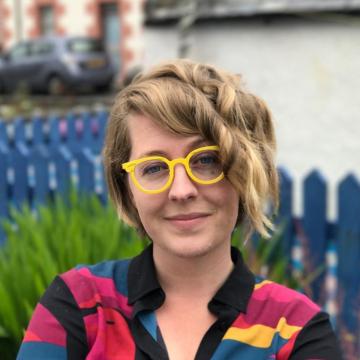Event
The First Digital Book (1887)
Toward the end of the 1880s, an odd little book appeared on the French collector’s market. At first glance, it looks like a medieval book of hours, each page decorated with gloriously historiated initials, charming page borders, and delicate illustrations. Except the illuminations are not limned in color, the way you might expect of a medieval prayerbook; and the pages don’t look quite right, either. They’re gray, not yellowed like parchment, and they shimmer a bit when you turn them. Lean in closer, and you notice the “ink” doesn’t flow smoothly over the surface but looks pixelated. This is a textile, not a text — or rather, a textile that is a text. It’s a silk book, woven on a Jacquard loom. The claim of my talk is that this post-medieval industrial textile is the first digital book. Taking this claim seriously would, I’ll argue, renarrate digital media’s emergence in the long history of audiovisual technologies. It would also challenge media studies to reconsider its disciplinary relationship to formalist analysis, audiovisual studies, and questions of labor.
Whitney Trettien is an assistant professor of English at the University of Pennsylvania, where she writes and teaches on the history of text technologies, from early printed books to digital forms and formats. Her first book, Cut/Copy/Paste, is a hybrid print/digital monograph on the creative reuse of fragments in hand-assembled books of the seventeenth century. This talk draws from the beginnings of a second project on the history of the digital book.

